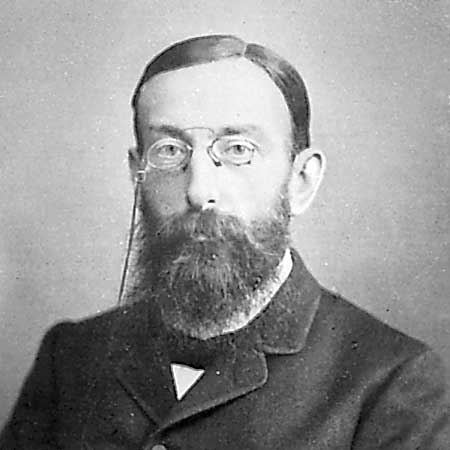Name Wilhelm Pfeffer Role Botanist | ||
 | ||
Died January 31, 1920, Leipzig, Germany Books Living on the Edge Series, Pfeffer's Notes on Pflanzenphysiologie, Osmotic investigations | ||
Education University of Gottingen | ||
Wilhelm Pfeffer Pflanzenbewegungen
Wilhelm Friedrich Philipp Pfeffer (9 March 1845 – 31 January 1920) was a German botanist and plant physiologist born in Grebenstein.
Contents
Academic career
He studied chemistry and pharmacy at the University of Göttingen, where his instructors included Friedrich Wöhler (1800-1882), William Eduard Weber (1804-1891) and Wilhelm Rudolph Fittig (1835-1910). Afterwards, he furthered his education at the universities of Marburg and Berlin. At Berlin, he studied under Alexander Braun (1805-1877) and was an assistant to Nathanael Pringsheim (1823-1894). Later on, he served as an assistant to Julius von Sachs (1832-1897) at Würzburg,
In 1873 he was appointed professor of pharmacology and botany at the University of Bonn, followed by professorships at the Universities of Basel (from 1877) and Tübingen (from 1878), where he also served as director of the Botanischer Garten der Universität Tübingen. In 1887 he became a professor at the University of Leipzig and director of its botanical garden.
He was elected a member of the Royal Swedish Academy of Sciences in 1897.
Scientific work
Pfeffer was a pioneer of modern plant physiology. His scientific interests included the thermonastic and photonastic movements of flowers, the nyctinastic movements of leaves, protoplastic physics and photosynthesis. In 1877, while researching plant metabolism, Pfeffer developed a semi-porous membrane to study the phenomena of osmosis. The eponymous "Pfeffer cell" is named for the osmometric device he constructed for determining the osmotic pressure of a solution.
During his tenure at Leipzig, Pfeffer published an article on the use of photography to study plant growth. He wanted to extend the chronophotographic experiments of Étienne-Jules Marey (1830-1904) by producing a short film involving the stages of plant growth. This "movie" would be filmed over a period of weeks by frame-at-a-time exposure taken at regular spaced intervals. Later, time-lapse photography would become a commonplace procedure.
